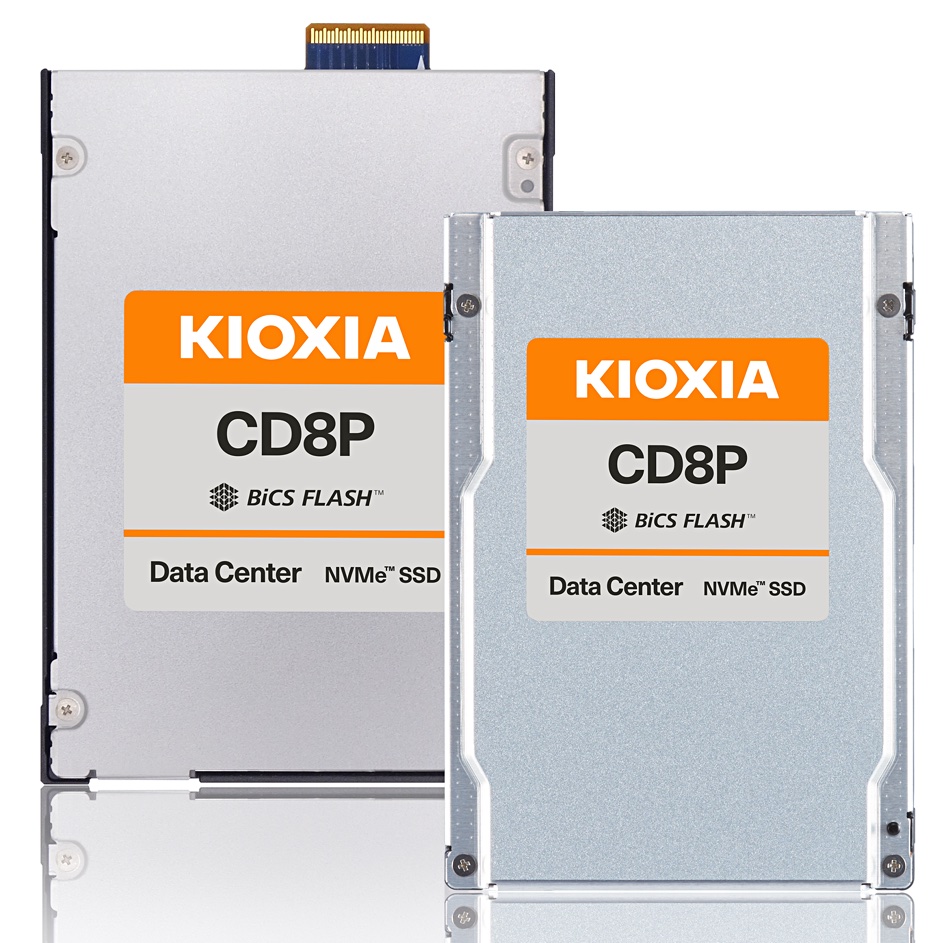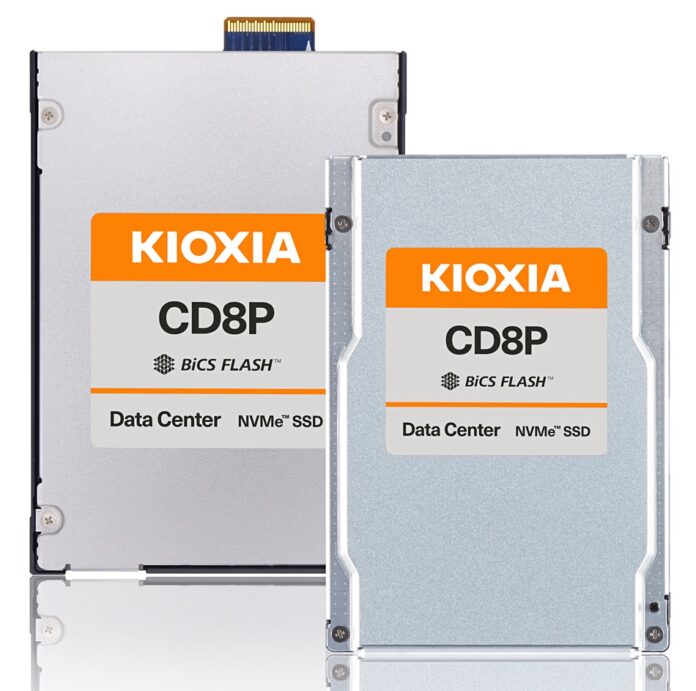Kioxia has launched a high-speed PCIe 5 data center SSD, the CD8P, which is significantly faster than its existing DC product, the CD8, and has double the stated capacity.
Both drives use BiCS 5, Kioxia’s 112-layer 3D NAND technology, with cells formatted for TLC (3 bits/cell). They are single port datacenter drives with power loss protection, end-to-end data protection, and support the OCP Datacenter NVMe SSD Specification 2.0. The CD8P range has flash die failure recovery as well. Self-encrypting (SED) models support the TCG Opal and Ruby SSC standards. Like the CD8, the CD8Ps come in read-intensive and mixed-use variants with differing capacity levels.
Kioxia SSD business unit SVP and GM Neville Ichhaporia said of the release: “The CD8P Series is ready for next-gen PCIe 5.0 servers, delivering a great combination of high performance with low latency in both E3.S and 2.5-inch (U.2) form factors.”

They are intended for general-purpose server and cloud applications.The CD8 starts at 960GB and tops out at 15.36TB in read-intensive form whereas the read-intensive CD8P starts at 1.92TB and goes up to 30.72TB.
Mixed-use capacities for the CD8 range from 800GB to 12.8TB, reflecting the need for over-provisioning cells for the added write burden. The CD8P’s equivalent range is 1.6TB to 12.8TB. The CD8P E3.S format drive’s maximum capacity for read-intensive work is 7.68TB with the U.2 (2.5-inch) version running up to 30.72TB.
The CD8P stated performance:
- Random read IOPS: 2 million vs CD8’s 1.25 million
- Random write IOPS: 400,000 vs CD8’s 200,000
- Sequential reads: 12 GBps vs CD8’s 7.2 GBps
- Sequential writes: 5.5 GBps vs CD8’s 6 GB/sec
(These are all “up to “ numbers.) The difference from the CD8 is, we understand, down to Kioxia’s latest controller and firmware. The firm emphasizes the drive’s consistent performance, saying its 99.999 percentile latency is <255 µs.
As with the CDS8, the CD8P supports 1 drive write per day (DWPD) in read-intensive form and 3 DWPD in mixed-use, during its 5-year warranty.
Although faster than the CD8, Kioxia’s CD8P is not quite as fast as Samsung’s PM1743 dual-port data center SSD, which provides up to 2.5 million/250K random read/write IOPS and has sequential read and write bandwidth numbers of up to 13 GBps and 6.6 GBps respectively.
However, Kioxia has its own dual-port data center drive, the CM7, and that provides up to 2.7 million, 600K random read/write IOPS and 14/6.75 GBps sequential read/write bandwidth; better than Samsung.
Solidigm’s D5-P5336 datacenter SSD goes up to 61.44TB with its 192-layer QLC (4 bits/cell) NAND. Kioxia will, we think, need to move to BiCS6 (162-layer or BiCS 8 (218-layer) NAND technology to match that capacity level.
Kioxia’s CD8P drives are now sample shipping to prospective customers.








